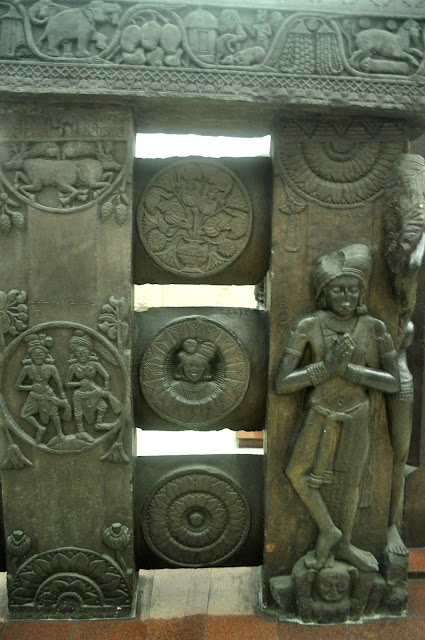The Bharhut Stupa was built in the mid-2nd century BCE (c.125 - 100 BCE) in the village of Bharhut, Madhya Pradesh. The stupa dome had collapsed long back, and the torana gateway and stone railings were moved to the Indian Museum in Kolkata.
The stone railings of the Bharhut stupa are unique in the sense that they have been embellished with a profusion of intricate carvings. Moreover, it was quite amazing to see that the carvings on these red sandstone walls have retained their polish and sharp edges even after 2000 years of erosion!
 |
| A gatekeeper welcoming visitors to the stupa with folded hands. |
 |
| The stone railing imitates the wooden post-and-rail construction of an earlier period, and is decorated with large medallions. |
 |
| It is quite striking that these railings have retained their mahogany-like polish even after 2000 years of erosion. |
 |
| The medallions and railing posts depict the faces of the donors, Jataka stories, events from Buddha's life and lotus ornaments. |
 |
| Stone railings depicting events from the Buddha's life |
 |
| An exquisitely carved lotus |
 |
| The Eastern gateway or torana. It resembles the gateways at Sanchi. |
 |
| Reclining animal. Wonder what animal this is.. |
 |
| A pair of reclining sphinxes |
 |
| Another gatekeeper welcoming the visitors to the stupa |
 |
| An elephant must be there in Indian architecture! The person depicted here is probably a king or a very rich donor. |







Post A Comment:
0 comments so far,add yours